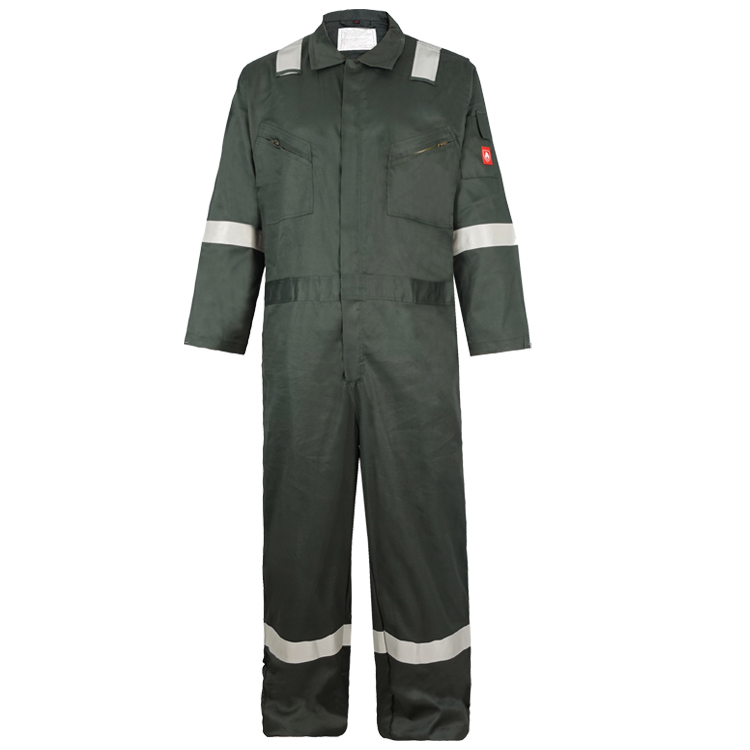Là gì EN13034 standard?
Do you use liquid chemicals and are your employees at risk of exposure to these chemicals? So you may be looking for work clothes that meet the EN 13034 tiêu chuẩn. This standard is about preventing liquid chemicals from splashing, to be precise, liquid chemicals. Liquid chemical protective clothing falls under the scope of the PPE Directive in the European Union, and obtaining a CE certificate is necessary to smoothly enter the EU market

Introduction to EN 13034:
EN 13034: Protective clothing for liquid chemicals – Limited protective performance. EN 13034/EN 13034+A1 provides limited protection for small amounts of liquid chemicals and splashing liquid chemicals (Kiểu 6 and PB [6] equipment). Safety clothing with this certification is suitable for areas where there is a risk of contact with small amounts of chemical splashing but does not require full body protection.
EN 13034 Chemical Protection of Liquids PPE in this category must demonstrate that it is suitable for protection against potential risks of exposure to light spray, liquid aerosols or low-pressure, low volume splashes, while a complete liquid permeation barrier (at the molecular level) is not required. This standard tests four different chemical types: acid, base, aromatics, and alcohol. At least two-thirds of the chemical substances must pass the test to obtain certification and CE mark clothing with this symbol, with a maximum level of 3.

What chemicals are involved in the EN 13034 tiêu chuẩn?
In the EN 13034 tiêu chuẩn, clothing fabrics must be tested to prevent splashing of four liquid chemicals:
1. Sulfuric acid (soluble in water, concentration of 30%)
2. Caustic soda (soluble in water, concentration of 20%)
3. ortho xylene
4. Butanol
These are quite common chemicals commonly used in practice. Generally speaking, work clothes that comply with EN 13034 standards can provide sufficient protection against all acids and bases (also known as alkalis) dissolved in water.
The temperature of the chemical during testing is 20 º C, with a margin of 2 º C.
This test identified two characteristics:
1) How much chemical liquid does the fabric repel
2) The percentage of liquid that the fabric passes through within one minute.
The standards for the rejection ability and permeability of fabrics are shown in the table below:
Grade waterproof ability
1>80%
2>90%
3>95%
Grade permeability
1<10%
2<5%
3<1%
The uniqueness of the EN 13034 standard is that chemical testing only requires passing one of the four liquid chemicals. Tuy nhiên, testing typically involves two types of chemicals, namely sulfuric acid and caustic soda. So what about the other two and millions of other chemicals that exist? With such standardization, EN 13034 has certain limitations, which are often unclear to people.
Chemical protective clothing EN 13034 testing requirements:
| Testing | test method | Compliance level | Minimum performance requirements |
| wear resistance | EN ISO 530-2:2011 | Mức độ 1: ≥ 10 cycles | Mức độ 1: ≥ 10 cycles |
| Mức độ 2: ≥ 100cycles | |||
| Mức độ 3: ≥ 500cycles | |||
| Mức độ 4: ≥ 1000cycles | |||
| Mức độ 5: ≥ 1500cycles | |||
| Mức độ 6: ≥ 2000cycles | |||
| Tear resistant trapezoidal shape | EN ISO 9073-4:1997 | Level 1>10 N | Mức độ 1: ≥ 10N |
| Mức độ 2>20 N | |||
| Mức độ 3>40 N | |||
| Mức độ 4>600 N | |||
| Mức độ 5>100 N | |||
| Mức độ 6>150 N | |||
| tensile strength | EN ISO 13934-1:2013 | Level 1>30 N | Mức độ 1: ≥ 30N |
| Mức độ 2>60 N | |||
| Mức độ 3>100 N | |||
| Mức độ 4>250 N | |||
| Mức độ 5>500 N | |||
| Mức độ 6>1000 N | |||
| Puncture Resistance | EN 863:1996 | Level 1>5 N | Mức độ 1: ≥ 5N |
| Mức độ 2>10 N | |||
| Mức độ 3>50 N | |||
| Mức độ 4>100 N | |||
| Mức độ 5>150 N | |||
| Mức độ 6>250 N | |||
| Exclusiveness to liquids | EN ISO 6530:2005 | Level 1>80% | At least one chemical grade 3 ≥ 95% |
| Mức độ 2>90% | |||
| Mức độ 3>95% | |||
| Anti liquid penetration | EN ISO 6530:2005 | Level 1>1% | Mức độ 2 of at least one chemical ≥ 5% |
| Mức độ 2>5% | |||
| Mức độ 3>10% |
Chemical protective clothing EN 13034 testing requirements: Other requirements in the EN 13034 tiêu chuẩn:
In addition to chemical testing, there are also some other required tests that are applicable to the EN 13034 tiêu chuẩn, but are described in the EN 14325 tiêu chuẩn. This standard provides a detailed description of the testing methods for liquid chemicals on protective clothing materials and seams. The testing revolves around wear resistance, tensile strength, tear resistance, and puncture resistance. At least the minimum performance level must be achieved here.

Related product testing and certification can be consulted with Shangtong Testing!
www.allflychina.com/
Tất cả đội bay
4Th.April., 2024

